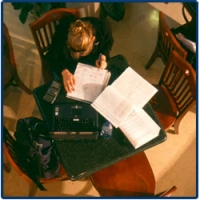Calculus I MAT 1500 Syllabus
Textbook: Stewart: Calculus: Early Trancendentals, 9th Edition, Brooks/Cole(Cengage) ISBN: 978-0-357-46626-1
Course Coordinator: Dr.Kathleen Acker
Chapter 1: Functions and Models
1.1 Four ways to Represent a Function
1.2 Mathematical Models: A Catalog of Essential Functions
1.3 New Functions From Old Functions
1.4 Exponential Functions
1.5 Inverse Functions and Logarithms
Chapter 2. Limits and Derivatives
2.1 The Tangent and Velocity Problems
2.2 The Limit of a Function
2.3 Calculating Limits Using the Limit Laws
2.5 Continuity
2.6 Limits at Infinity; Horizontal Asymptotes
2.7 Derivatives and Rates of Change
2.8 The Derivative as a Function
Chapter 3. Differentiation Rules
3.1 Derivatives of Polynomials and Exponential Functions
3.2 The Product and Quotient Rules
3.3 Derivatives of Trigonometric Functions
3.4 The Chain Rule
3.5 Implicit Differentiation
3.6 Derivatives of Logarithmic Functions
3.7 Rates of Change in the Natural Sciences
3.8 Exponential Growth and Decay
3.9 Related Rates
3.10 Linear Approximations and Differentials
4. Applications of Differentiation
4.1 Maximum and Minimum Values
4.2 The Mean Value Theorem
4.3 Derivatives and the Shapes Of Curves
4.4 Indeterminate Forms and L'Hopital's Rule
4.5 Summary of Curve Sketching
4.7 Optimization Problems
4.8 Newton's Method
4.9 Antiderivatives
Chapter 5: Integrals
5.1 Areas and Distances
5.2 The Definite Integral
5.3 The Fundamental Theorem of Calculus
This material is covered over a 14 week (56 class hours) semester.
WebAssign
Faculty have the option of utilizing WebAssign, a web-based supplement to our textbook. This portal provides graded and practice homework, online quizzes, video instruction and an eBook. WebAssign registration requires an access code, which is included with the text purchased from the Villanova Bookstore.
Note: If you choose to rent/purcase a book that comes without a WebAssign code, you will be required to purchase the registration code separately if your instructor uses WebAssign.
Upon the start of each semester, students will received a second code, called a class enrollment code, from their instructor. This code enrolls them into the specific course set up by their instructor for that semester.
Computer Algebra System (CAS)
Instructors will be using Maple or a comparable Computer Algebra System (CAS) in the course. Students will work with the software interface to manipulate variables, expressions, and functions in order to arrive at both exact and approximate solutions for posed problems. In addition, students should be able to use Maple to create graphs, calculate limits and determine derivatives.

